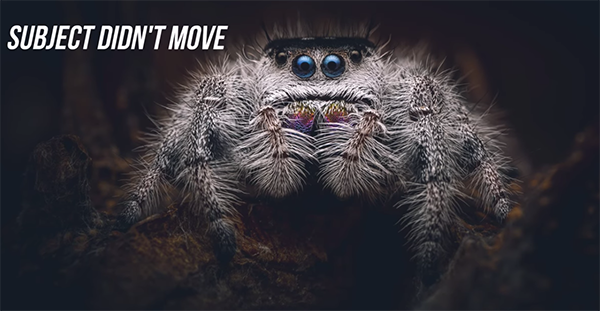Use Focus Bracketing & Stacking for Sharp Macro, Nature & Landscape Photos (VIDEO)
If you’re looking for a way to optimize the range of focus throughout an image the tutorial below explains the best way to get the job done, and it works for just about any type of photos you make. We refer to this technique as “bracket and stack it” and it’s not difficult to do.
In simple terms this involves shooting multiple images of the same scene, each with a different point of focus point. For landscape photography this might mean one shot focused on the background, another on a key foreground object, and a third with the focus point somewhere in between. British macro photographer Stewart Wood explains everything you need to know.
For this method to work there are two things you need to understand: The first is how to bracket the photos properly in the camera, and the second involves properly merging them during the editing process to achieve one super-sharp image. This episode is devoted to the first part of the equation, and you can learn more about the stacking procedure by watching an earlier tutorial we posted from a wildlife photography expert.

Because of Wood’s specialty his demonstration uses a close-up image, but it’s easy to extrapolate and employ this method with various types of images. In fact, experienced landscape shooters do it all the time. You can use autofocus or manual focus to capture the sequence of photos, and Wood explains the best way to do this, so you’ll be set up for stacking success.
One key to this technique has to do with your subject; specifically, it has to remain perfectly still while you shoot the sequence—as even the slight bit of movement will spoil your results. This not only applies for macro shots of insects, but for landscape images with wind-blown trees.
Gear is important too. Some cameras offer a built-in Focus Stacking and Bracketing mode, but that’s not essential for getting the job done. As you’ll see, what is important is the speed of your camera. And if you use flash for shooting macro images, recycle time is another key concern. With regard to bracketing and stacking macro photos Wood says that “a flash is your best friend.”

Wood has cameras that offer both Focus Stacking and Bracketing modes, and he explains how to take advantage of these. He then discusses how to accomplish the technique yourself if the camera you use lacks these features. You’ll also learn how to configure a flash if that’s part of your approach.
The first thing to do if your camera lacks bracketing and stacking capabilities is to switch the mode dial to Manual. Then you can follow the advice Wood provides for choosing the proper settings for the particular task at hand. Now that you’re properly set up you can follow his step-by-step procedures for capturing the shots.
Once you’re done watching be sure to check out the tutorial mentioned above so you’ll know how to properly stack the photos for eye-popping results.





